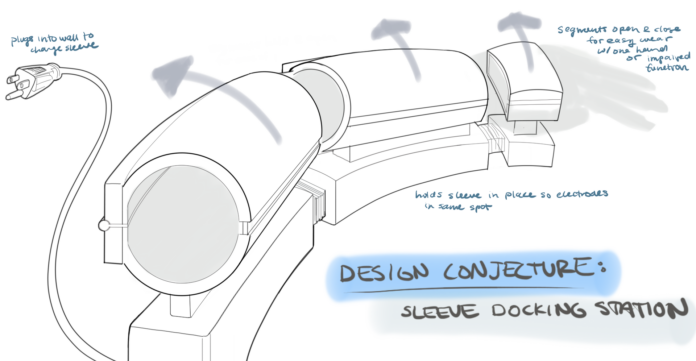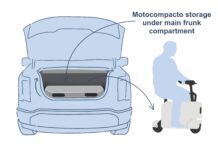After a preliminary observation of a study patient using the NeuroLife sleeve the other day, I noticed that the amount of adjustment and assistance that is needed to simply put on the sleeve was way too much.
Not only did two external individuals (who were both familiar in how to put on the sleeve), struggle to put it onto the patient (that was impaired in one arm), the sleeve needed to be adjusted about three or four times before the process of using the sleeve for rehab even began since the electrodes didn’t align with the correct muscles on the arm.
I spoke with the Battelle team to ask about the alignment of electrodes and how sensitive things needed to be placed and identified a number of issues with how the sleeve was just put on. They have tried to include a grid visualization near the elbow to align things better on the patient, but while that might help an external hand somewhat, what good is that for the patient? Even without the physical impairment, seeing the peak corner of my elbow is difficult.
If the sleeve is to be used in a home setting with an impaired patient, how are they going to put this on with a physical impairment, how are they going to make sure it’s on right, and how do they know if adjustments or anything else is needed?
A Docking Station
My first rough idea was to create a docking station of sorts for the sleeve to be resting in.
Not only does this help to hold and charge the sleeve, it can also help in the alignment and wearing of the sleeve for the wearer.
The form of the sleeve itself will have to be changed and may need to integrate some amount of hard or bendable material to slide into a groove or slot in the station. The sleeve would probably need an openable partition on one side that would be sealed shut or slipped open by the station itself.
In its resting state, the sleeve would be in an open dock– charging. A user would simply put and position their arm in the various open sections of the station and close the hinged sections sealing the sleeve together in a single piece.
Not only does this address the issue of a user putting the sleeve on (since the hinging mechanism can just be touched or nudged to perform a soft/slow close, it also addresses issues with aligning the electrodes in a single spot since the way the arm can rest in the station would be limited or guiding the arm to lay a certain way.




